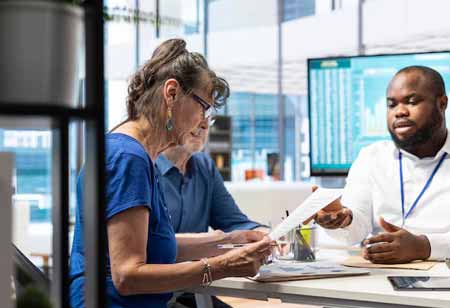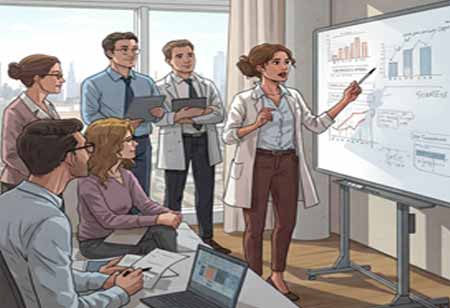Thank you for Subscribing to Healthcare Business Review Weekly Brief
Be first to read the latest tech news, Industry Leader's Insights, and CIO interviews of medium and large enterprises exclusively from Healthcare Business Review
Unlocking Cellular Healing: Stem Cell Regenerative Medicine Services in APAC
Stem cell regenerative medicine rapidly transforms healthcare, offering promising avenues for treating degenerative diseases and traumatic injuries.

By
Healthcare Business Review | Monday, April 28, 2025
Stay ahead of the industry with exclusive feature stories on the top companies, expert insights and the latest news delivered straight to your inbox. Subscribe today.
Stem cell regenerative medicine rapidly transforms healthcare, offering promising avenues for treating degenerative diseases and traumatic injuries. Nowhere is this transformation more pronounced than in the Asia-Pacific (APAC) region. With robust investments in biomedical research, progressive regulatory environments, and a rising demand for advanced medical treatments, APAC is emerging as a global leader in stem cell innovation.
Governments are backing research and promoting medical tourism centered on regenerative medicine. South Korea and Thailand, for example, are positioning themselves as medical hubs, attracting patients worldwide for stem cell-based cosmetic and orthopedic treatments. Educational campaigns led by health ministries and medical associations are helping reshape perceptions and boost acceptance. Patient advocacy groups emerge as influential voices pushing for policy reforms and financial subsidies.
Trends Driving Innovation in APAC
Countries like Japan, South Korea, China, and Singapore have proactively funded stem cell research and established favorable regulatory frameworks. The safety of Regenerative Medicine allows conditional early approval of regenerative products, accelerating their clinical use. AI is revolutionizing every aspect of stem cell research, from identifying promising stem cell lines and predicting differentiation pathways to automating quality control in cell manufacturing. ML algorithms are increasingly used to analyze vast amounts of cellular imaging data, which aids in the early identification of anomalies and optimization of cell culture conditions.
Companies are integrating AI-powered platforms to streamline the research-to-clinic pipeline. Trends indicate a shift toward personalized medicine through autologous and allogeneic stem cells. An increasing emphasis is on developing off-the-shelf stem cell therapies, which promise broader accessibility. Collaborations between academic institutions and biotech firms fuel clinical trials, particularly in spinal cord injury, osteoarthritis, cardiovascular regeneration, and skin wound healing.
Strategic Solutions for Sustainable Growth
The APAC stem cell regenerative medicine sector faces a series of complex challenges. Regulatory fragmentation across countries makes it difficult to streamline the approval and commercialization of therapies. While Japan has progressive regulations, other nations lag in creating structured frameworks, leading to quality and safety standards inconsistencies. The disparity hinders cross-border collaborations and slows the pace of innovation. The high cost of therapy development and limited reimbursement options act as barriers.
Stem cell therapies are autologous treatments that involve expensive procedures such as cell harvesting, processing, and re-infusion. The costs are often out-of-pocket expenses for patients, limiting widespread adoption. Stem cell manipulation and production require stringent GMP compliance, which adds to operational complexities and financial burdens. Ethical and logistical issues around stem cell sourcing persist especially embryonic stem cells. Public perception, shaped by cultural and religious considerations, influences how new therapies are accepted and adopted. In many APAC countries, insufficient awareness about stem cell treatments contributes to misinformation and hesitancy.
Strategic solutions are being implemented across the region. Harmonizing regulatory frameworks under standard APAC guidelines could facilitate safer and quicker therapy approvals. Countries are investing in centralized GMP-certified facilities to lower entry barriers for emerging biotech firms. Public-private partnerships defray the cost of clinical trials and infrastructure development. Technological innovations are reducing costs through automation and scale. AI is playing a crucial role here. Robotic systems powered by AI enhance cell culturing precision and reduce reliance on manual processes.
Future Trends and Impact
Applying stem cell therapies in APAC spans a broad spectrum of medical disciplines. In orthopedics, mesenchymal stem cells (MSCs) are widely used to repair cartilage and treat conditions such as osteoarthritis. Cardiology departments are increasingly experimenting with stem cell injections to regenerate damaged heart tissue post-myocardial infarction. The sector is creating new employment opportunities in biotechnology, clinical research, AI development, and medical tourism.
Clinics offer therapies using adipose-derived stem cells for skin rejuvenation and hair regrowth. Hematopoietic stem cell transplants (HSCTs) remain a cornerstone in oncology, particularly for treating leukemia and lymphoma. The market impact of these applications is profound. The APAC stem cell therapy market is expected to grow and be driven by rising healthcare investments and a growing middle-class population with disposable income.
The focus is shifting toward next-generation regenerative platforms. These include induced pluripotent stem cells (iPSCs), organoids, and gene-edited cell therapies. iPSCs are particularly promising due to their ability to differentiate into any cell type while avoiding the ethical concerns tied to embryonic stem cells. APAC countries are heavily investing in iPSC banks and related biobanking infrastructure. Predictive analytics, natural language processing, and digital twins are integrated into stem cell research environments to simulate patient responses and tailor treatments.
Cloud-based AI platforms also enable collaboration between researchers and clinicians across borders, further accelerating innovation. With AI enhancing research and application capabilities and regional efforts to harmonize regulations and reduce costs, the sector is poised for substantial growth. Realizing the full potential of regenerative medicine will require continued collaboration between governments, academia, industry, and society. If current trends continue, APAC could lead the next frontier of biomedical innovation and redefine how the world approaches healing at the cellular level.






